We prepare lots of holiges like Hoornada holige(Pappu Obattu) ,Coconut Holige, Sogasu Obattu, Sajjige Obattu(Sajjappa), Garugu Obattu
and Paala Obattu(Haalu Holige) which tastes best on its own and has
its own importance for the festivals.
Method:
for filling:
Although my regular cooking is very much modernized, I still prefer to
indulge in the traditional dishes occasionally and especially during
festivals. I select a very simple menu for festivals(though few
festivals are exceptions) and I would end up making some kheer,sundal
and a variety rice which makes my job easier as hubby dear does not like
me spending more time in kitchen.But I miss those traditional dishes
which my mom makes and which I cherished growing up.We have lots of
traditional dishes which I never got to make after my marriage because
of my laziness but I crave for few of them and I ask my mom to make it
for me when I visit her.
Coming to the holiges I mentioned above Sogasu holige, Sajjige holige
and Garugu Holige they all look similar and all are deep fried but the
filling,taste and texture of each holige is different from the
other.Sogasu and Sajjige holige uses rawa filling which is made
differently for each holige and where as garugu holige uses rice flour
filling.I know that it is very confusing if you are hearing all these
names for the first time but once I put up all these recipes you can
easily differentiate them.Now let us see how to make Sajja obattu.
Sajjige Holige is more popularly called as 'Sajjappa' in Karnataka and ' Sojjappalu or Halwa Poori ' in Andhra,we usually call it as 'Sajjobbattu' at my place.It is a crispy fried Holige and try this holige on one of those navratri days and enjoy it.You can prepare it a day before if you are planning to serve it as Prashad during Navratri.
Check out other Holige Recipes here:
Sajjige Holige is more popularly called as 'Sajjappa' in Karnataka and ' Sojjappalu or Halwa Poori ' in Andhra,we usually call it as 'Sajjobbattu' at my place.It is a crispy fried Holige and try this holige on one of those navratri days and enjoy it.You can prepare it a day before if you are planning to serve it as Prashad during Navratri.
Check out other Holige Recipes here:
- Garugu Hollige/ Hollige with rice flour-coconut filling
- Haalu Holige | Paala Poori | Paal Poli
- Hoornada Holige/Obbattu
- Pooran (Puran) Poli | Bobbatlu
Sajjappa | Sojjappalu | Halwa Poori | Sajjobbattu:
Shelf life: 2 days | Yields: 10-12 Sajjappa
Prep time:20 mins | Cooking time:40 mins | Total time:60 mins
Cuisine: South Indian | Category: Sweets
Ingredients:
for Stuffing:
1 cup Rava(Bombay Rava/Upma Rava)
1 cup Rava(Bombay Rava/Upma Rava)
2 1/2 cups Water
1 cup Sugar
1 tbsp Rice flour
1/4 cup finely chopped Cashewnuts
1/2 tsp Cardamom powder
2 tbsp Ghee
for kanaka(outer cover):
1 cup Chiroti/Holige rawa(baarik rava)
a fat pinch of Salt
1/2 cup Oil(to soak the kanaka)
Oil for deep frying
Method:
for filling:
- Heat ghee in a kadai and add cashewnuts and slightly fry them and remove the nuts aside or in the same ghee add rava and fry until you get nice aroma and keep aside.
- Meanwhile boil water separately in a vessel and then add roasted rava with cashew nuts and stir continuously until the mixture becomes thick.
- Add sugar to it and cook well until the mixture thickens.
- Add rice flour and cardamom powder and mix it nicely and let the mixture cool completely.
- Grease your palms and make big lemon size balls out of the filling and keep them aside.
for Kanaka:
- Mix chiroti rawa with a pinch of salt to it and add water to it and knead in to a very smooth dough.The consistency of the dough should be very loose than the regular roti dough.
- Now using your fist hit the dough for few mins to get the softer dough.
- Now place this dough in a deep vessel and pour oil over it until the dough is completely soaked in oil.Let the dough rest for a minimum of 1 hr and up to 2 hrs.Drain the excess oil and use it for other purpose.
- See the pics to get to know the consistency of the kanaka.
- Cut the holige paper into a round and place it on the rolling stone which we use to roll rotis.Grease holige paper or banana leaf or a plastic cover with oil.
- Pinch a small amla sized dough and flatten it a bit using your hands as shown in the pics and place one round of filling and seal it properly from all the edges like how we do for parathas.
- Now flatten it slowly with hands to get 3" diameter circle to the size of big pooris.It should not be very thick like paratha nor thin like rotis,it should be slightly thicker than poori.See the pictures for clear idea.
- Meanwhile heat oil for deep frying in a kadai and gently slide the patted holige from the sides into the oil taking care that oil would not splutter.
- Deep fry them until they are slightly brown on both side.
- Drain them on kitchen towels to remove the extra oil.
- Repeat the process for making holiges,smear the holige paper liberally with oil and follow the same procedure.
Serve them hot/warm or at room temperature.You can store them at room temperature for two days.
Notes:
- Always make kanaka before proceeding to make filling which helps in saving time.
- As these can be stored for two days you can make them ahead if you want.But the fresh ones are more crispier and tastier.
- The addition of nuts is entirely optional but it adds a nice taste to every bite of holige.
- If you are a health freak instead of deep frying you can even fry it on tawa like how we do for parathas,they taste still good but the deep fried ones taste anytime better.
- You can add 1 tbsp Rice flour to the cooked rava while making the filling, this will give crispier sajjappa.
- You can use Maida in place of chiroti rava if you don't get it.
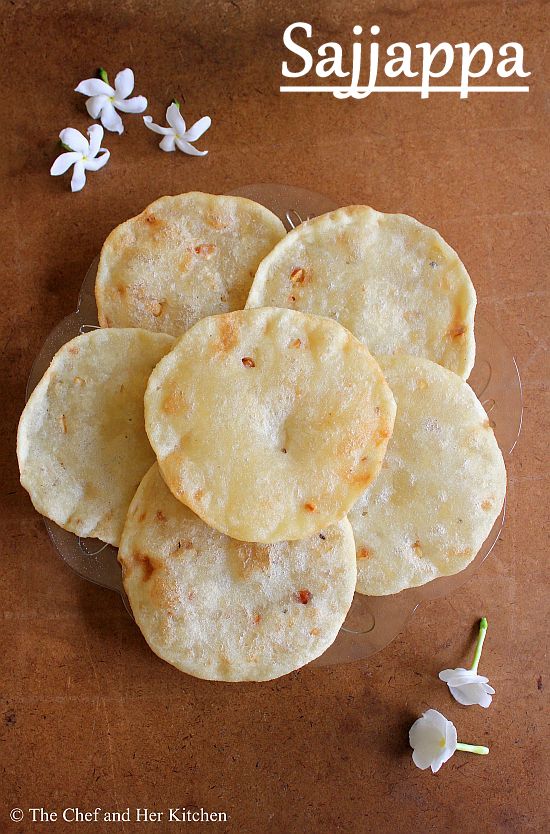
Technorati
Tags: sajjappa ,sojjappalu ,halwa puri, andhra recipes, karnataka
recipes ,traditional sweets recipes, holige recipes, sajjappa
recipe

 Vegetables
Vegetables



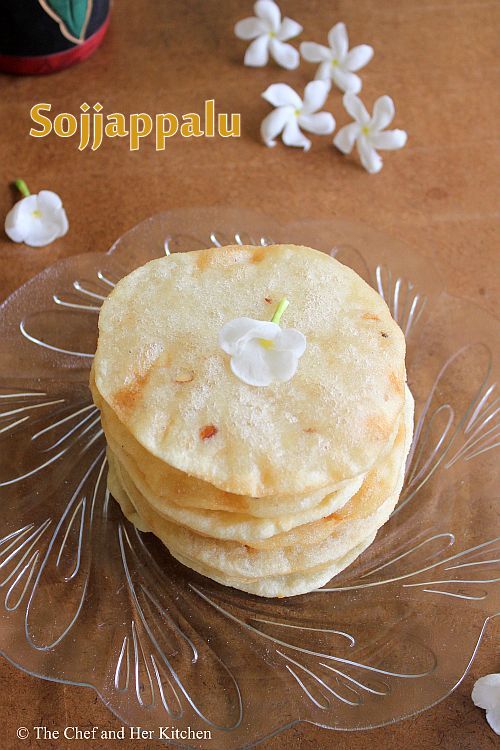
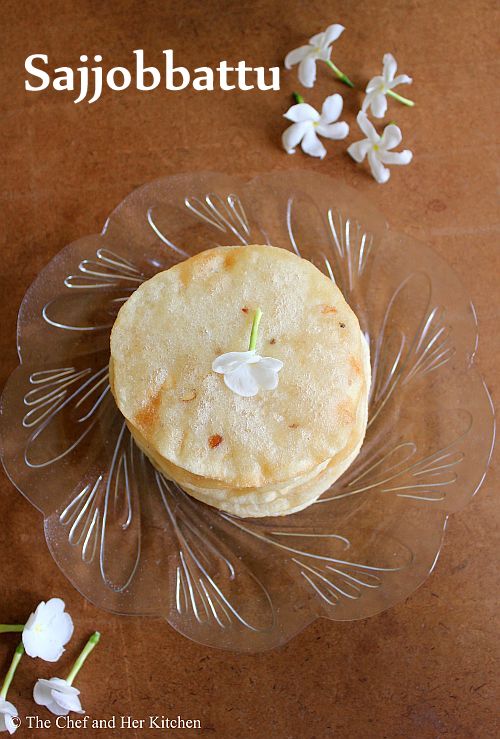
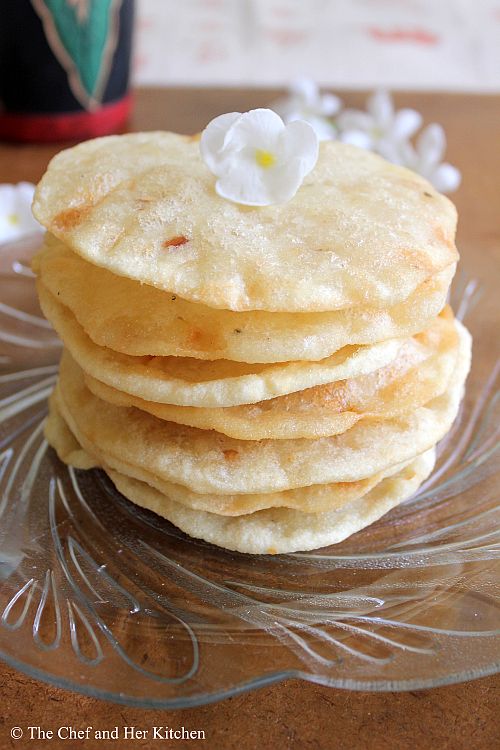
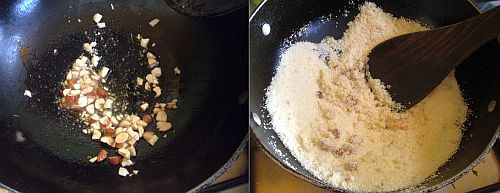
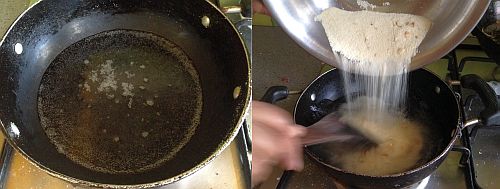

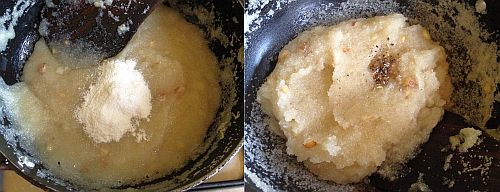
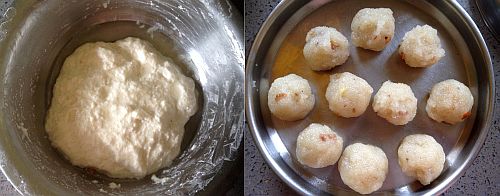
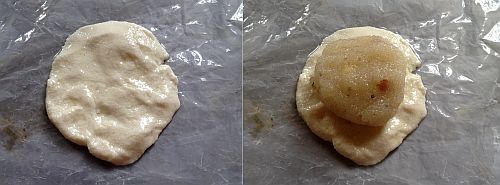


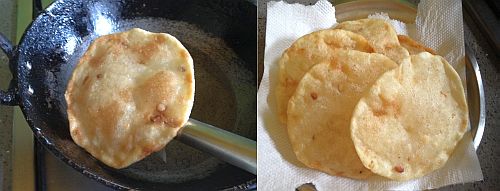







2 comments:
wow looks mouthwatering ...lovely clicks ...hope you are doing well :)
Howdy! Quick question that's entirely off topic.
Do you know how to make your site mobile friendly?
My blog looks weird when browsing from my apple iphone.
I'm trying to find a theme or plugin that might be able to correct this
problem. If you have any suggestions, please share.
Thank you!
Post a Comment
Thank you for visiting The Chef and Her Kitchen.
Do leave your comments and feedback,they are always welcome.Please do not leave any links.
Hugs,
Prathy